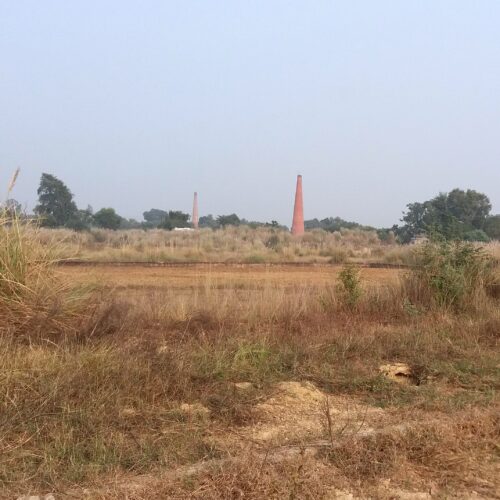With the growth of human population, more and more land was cleared for cultivation, housing and cattle rearing. Later, as towns and cities started developing, vast areas of land were started to be consumed in making roads, rail tracks, bridges, buildings, markets, trade centres, Educational and Research Centres, hospitals, railway junctions, etc.
Thus, the patterns of land-use have been changed considerably due to the development associated with industrialization. Various Mega-dams, Power Plants etc utilize vast areas of land in both the developing and developed countries.
About 30 percent of the land surface is useless because it consists of marshy swamps, deserts and mountains.
In some countries, vast areas of seas have been reclaimed for commercial use. In Japan and Netherlands, engineers have created additional land by filling bays and harbours.
The developers in some countries are turning farmlands, wetlands, low lands and other lands into suburbs, shopping centres, motor ways and housing apartments. In India, 54 percent of the land area is arable and 22 percent of the land area is under forest cover. Wet lands are spread in 18 percent area and 4 percent of the land area has been protected under the National Wildlife Protection Plan.
Mining and quarrying; overgrazing; pasture development; deforestation; habitat fragmentation, eutrophication of lakes, ponds and coastal areas; loss of rare species of plants and animals; land erosion; flooding, siltation; desertification etc. are the major side effects of modern development.
These anthropogenic activities of habitat destruction are causing degeneration of biodiversity in the whole terrestrial and aquatic segments of environment. Secondly, these activities are causing degradation of land in many different ways causing permanent imbalances in the natural environment.
Vast areas of land have been consumed in making roads; rail tracks; bridges; shopping complexes; trade centres; small and big institutions; hospitals; transport workshops; stadium; grasslands; golf courses; sports villages etc. These are some of the important structures that symbolize development in positive sense. The land has gone under stress due to the growth of human habitations, industrialization; construction of mega dams under river valley projects ( like that of the Sardar Samovar Dam) developing water distribution systems across states, establishment of power plants etc. also.
Land Management should be based on following common principles-
• Land-user-driven and participatory approaches;
• Integrated use of natural resources at ecosystem and farming systems levels;
• Multilevel and multistakeholder involvement; and
• Targeted policy and institutional support, including development of incentive mechanisms for Land Management adoption and income generation at the local level.
The application of Land Management requires collaborations and partnerships at many different levels. These levels are – land users, technical experts, and policy makers. These three should ensure that the causes of the degradation and corrective measures are properly identified, and that the policy and regulatory environment enables the adoption of the most appropriate management measures.
Sustainable Land Management Practices incorporate other established approaches such as soil and water conservation, natural resources management, integrated ecosystem management and involves a holistic approach to achieving productive and healthy ecosystems by integrating social, economic, physical and biological needs and values.
Aims of Sustainable Land Management are –
(i). Maintaining long term productivity of the ecosystem functions (land, water, biodiversity) and
(ii). Increasing productivity (quality, quantity and diversity) of goods and services, and particularly safe and healthy food.
Considerations for Proper Landuse Management
A proper land management needs the following important considerations –
(1).The natural resource characteristics of individual ecosystems and ecosystem processes (climate, soils, water, plants and animals);
(2).The socio-economic and cultural characteristics of those who live in, and/or depend on the natural resources of, individual ecosystems (population, household composition, cultural beliefs, livelihood strategies, income, education levels etc);
(3).The environmental functions and services provided by healthy ecosystems (watershed protection, maintenance of soil fertility, carbon sequestration, micro-climate amelioration, bio-diversity preservation etc); and
(4).The myriad of constraints to, and opportunities for, the sustainable utilisation of an ecosystem’s natural resources to meet peoples’ welfare and economic needs (e.g. for food, water, fuel, shelter, medicine, income, recreation).
Key Components of Land Management
A proper Land Management programme needs to maintain following key components –
• Biodiversity: the variety of species, populations, habitats and ecosystems;
• Ecological integrity: the general health and resilience of natural life-support systems, including their ability to assimilate wastes and withstand stresses such as climate change and ozone depletion; and
• Natural capital: the stock of productive soil, fresh water, forests, clean air, ocean, and other renewable resources that underpin the survival, health and prosperity of human communities.




